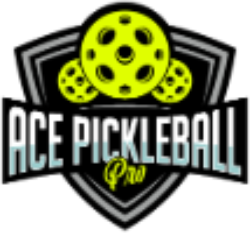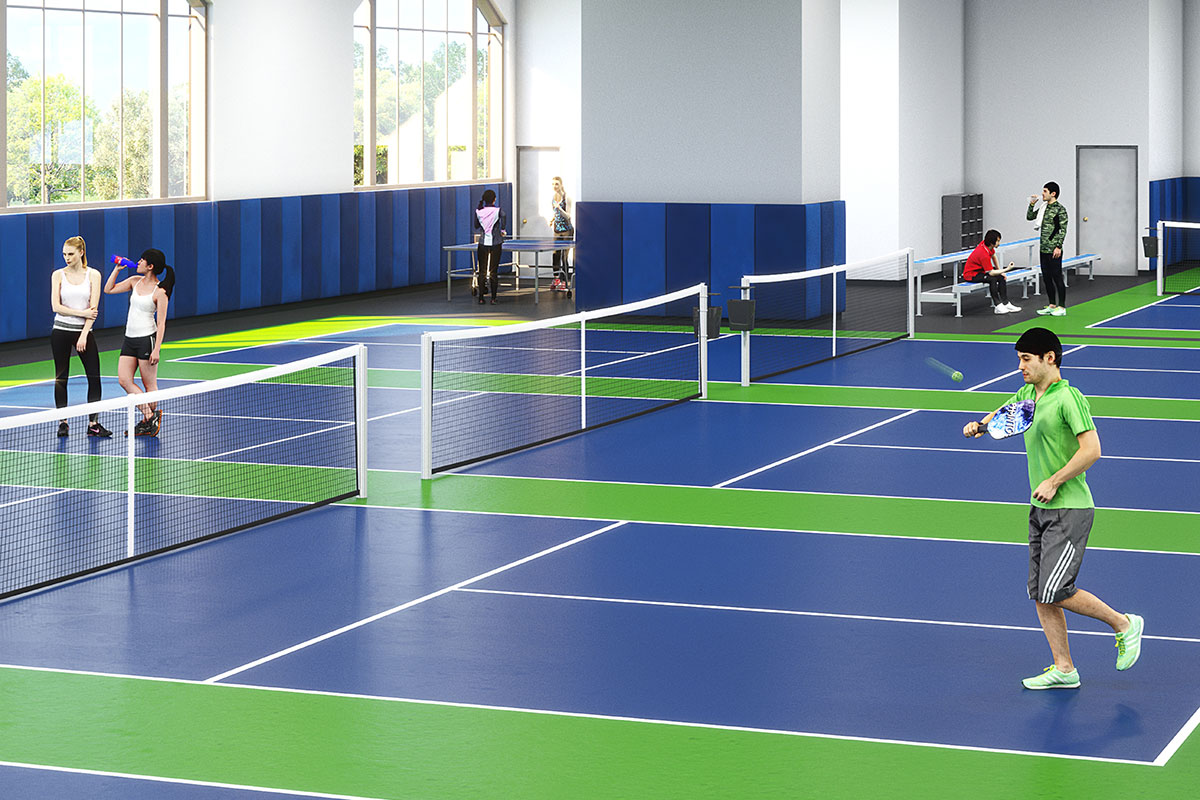Pickleball Rules Made Easy: Your Ultimate Guide
Have you recently heard about the trending sport, pickleball? Are you curious to know more about its rules and how to play for the first time? Look no further! In this blog, we will provide a comprehensive summary of the simple rules of the game. We will start with equipping yourself with the right gear, choosing the perfect paddle, and then move on to learning the basics like serving and understanding the double bounce rule. After that, we’ll dive into advanced strategies like mastering your serve and effective groundstrokes. Furthermore, we will explore variations in play such as playing singles or doubles, and understanding scoring basics to score points. To make things easier for you, we have also included a section with frequently asked questions on pickleball rules. Lastly, we have listed down some resources where you can find pickleball courts near you so that you can start practicing right away!
Equip Yourself for Pickleball
Enhance your pickleball experience with quality gear, including proper attire, shoes, and a visor for eye protection. Explore paddle options in various materials and weights, including pickleball paddles, and ensure you have a net, court, and ball. Equipping yourself properly sets the stage for an enjoyable game, whether playing on the serving side of the court or volleying the ball with precision.
Essential Pickleball Gears
When gearing up for pickleball, comfortable and supportive shoes are essential for quick court movements. A quality pickleball bag keeps gear organized and protected. Protective eyewear safeguards against accidental impacts, while Dri-FIT clothing helps manage sweat during intense play. Additionally, ankle braces and knee supports provide stability, helping players stay on top of their game.
Choosing the Right Paddle
Choosing the perfect paddle is crucial. Ensure the weight and grip size match your comfort. The material of the paddle face greatly affects ball control and spin. Common core materials include Nomex, aluminum, and graphite. The edge guard and handle shape also impact paddle performance. A well-balanced paddle promotes accuracy and power, improving your game.
Learning the Pickleball Rules
To enjoy pickleball and ensure fair competition, it’s important to understand the guidelines. This includes knowing court dimensions, serving procedures, and scoring. Following the rules in the kitchen area promotes sportsmanship and respect.
Knowing the rules enhances the gameplay experience by reducing disputes and allowing for smoother play. It also helps players develop strategies and make informed decisions. Additionally, observing etiquette practices like respecting opponents and avoiding distractions contributes to a positive experience for all players.
Understanding the Serve in Pickleball
The serve in pickleball initiates the game and switches service sides. The server must stand behind the service court on the right side of the court, facing their opponents, to attempt the first serve. A loss of serve results in a point for the opposing team. After the serve, the ball must bounce once before being volleyed, emphasizing the importance of understanding the basic rules of the service area to start the game right.
Exploring the Double Bounce Rule
Understanding the double bounce rule is crucial for strategic pickleball play. Encouraging longer rallies, this rule requires both teams to allow the ball to bounce once on each side of the net. It also dictates that the server’s first and the receiving team’s second hits must be groundstrokes, enhancing game strategy and control. Comprehending the double bounce rule adds depth to the game, as it allows for a fair return bounce and prevents the serving team from gaining an unfair advantage.
Knowing the No-Volley Zone or “The Kitchen”
The no-volley zone, also known as “the kitchen,” restricts players from volleying the ball in the air, requiring them to let it bounce first. It’s a critical boundary to observe, preventing rule violations and errors, while mastery enhances net game tactics. Familiarity with this area, located within 7 feet on both sides of the net, is essential for all pickleball players to improve their positioning and overall game strategy. The kitchen line, also known as the non-volley zone, is a key element in the game of pickleball and understanding its rules is crucial for success on the court.
Advanced Pickleball Strategies
Refining the serve adds variety and unpredictability to the game. Effective groundstrokes allow players to control and manipulate the game. Strategic serving and groundstroke play elevate pickleball performance, enhancing overall game proficiency and enjoyment. Continual practice and application of strategies enhance game performance. Mastering advanced strategies is a great way to improve the game.
Mastering the Serve
Mastering the serve in pickleball is essential for adding complexity and challenge to the game. It dictates the momentum of play, with rotating placements keeping opponents on the defensive. Developing consistent serving skills enhances game control, contributing to overall confidence and success. Varied techniques and accuracy in serving are key components of mastering the serve, ensuring a strong foundation for players.
Winning with Effective Groundstrokes
Mastering the art of groundstrokes enhances a player’s ability to control ball placement and dominate play. It requires precision, timing, and balance to exert pressure on opponents and set up winning shots. Effective groundstrokes strengthen overall game strategy and tactics, improving shot accuracy and versatility. Practicing groundstrokes is essential for new players and experienced athletes alike.
Variations in Pickleball Play
Pickleball play offers various adaptations catering to all skill levels and ages. This versatility makes it an inclusive and enjoyable sport. Understanding these variations ensures fair and competitive gameplay, contributing to the dynamic nature of the game. Adaptations can suit individual preferences, contributing to the evolving nature of the sport.
Playing Pickleball Singles
Engaging in singles play in pickleball allows for concentrated and intense gameplay, requiring strategic positioning and quick decision-making. Agility, precision, and individual prowess are emphasized, promoting on-court independence and adaptability. Playing singles promotes physical fitness, mental acuity, and the development of personal play styles, making it a great way to enhance one’s skills and enjoy the game.
Strategies for Pickleball Doubles
Employing effective strategies in pickleball doubles play encourages teamwork and coordination. Successful pickleball doubles play involves effective communication and seamless collaboration on the court. The rules and regulations of pickleball doubles play promote fair and harmonious team dynamics. Mastering pickleball doubles strategies fosters a sense of camaraderie and mutual support among players, resulting in dynamic and engaging matchups.
Decoding Pickleball Scoring
Understanding the ins and outs of pickleball scoring is crucial for an enjoyable and competitive game. The scoring system establishes a systematic method for determining game outcomes, adding excitement and anticipation to each match. Additionally, it contributes to the overall structure and rhythm of the game, ensuring fair and equitable progression. Mastering pickleball scoring rules is essential for all players.
Scoring Basics in Pickleball
Scoring in pickleball follows simple and transparent rules, allowing players to track game progression and stay focused on the court. Understanding these basics enhances player engagement and promotes an inclusive environment for all skill levels. Additionally, these rules contribute to the overall flow and momentum of the game, ensuring a fair and enjoyable experience for everyone on the court.
Winning Games and Matches
Celebrating victories in pickleball games and matches fosters a sense of achievement and fulfillment as players showcase their proficiency, adaptability, and sportsmanship on the court. The structured and fair framework provided by the rules of pickleball ensures that victory reflects players’ skills and resilience. Additionally, it affirms the significance of fair play and respect in achieving success.
Understanding the First-Server Exception Rule
The exciting first-server exception rule in pickleball adds unpredictability to the game and enhances players’ adaptability on the court. Understanding and adhering to this rule contribute to the strategic complexity of the game, showcasing players’ ability to navigate unforeseen challenges. Ultimately, the first-server exception rule underscores the dynamic and engaging nature of pickleball.
Applying the First-Server Exception Rule in Play
Adapting to unexpected situations is essential when applying the first-server exception rule in pickleball play. It creates opportunities for players to showcase their versatility and resilience, fostering a sense of spontaneity and adaptability. This rule adds an element of intrigue and surprise to the overall game experience while encouraging players to embrace new challenges and opportunities on the court.
FAQs on Pickleball Rules
Unraveling the intricacies of pickleball rules clarifies gameplay for enthusiasts, covering common queries to demystify the sport. By elucidating FAQs, players gain confidence in navigating the court, embracing a valuable resource to deepen their mastery of the game. FAQs serve as an accessible knowledge base, fostering informed and confident gameplay for new and seasoned players alike.
How to Avoid Common Faults?
Minimizing common faults in pickleball play enhances the game experience. Understanding and following the rules promotes fair interactions, proficiency, and sportsmanship among players. By addressing and mitigating common faults, players can create a positive game environment.
What to do When a Ball Hits the Non-Volley Line?
When the ball hits the non-volley line, it’s important to know what to do. Stepping on or beyond the line can result in faults, so avoid it by following the player steps. Pay attention to the bounce of the ball in relation to the line and any other permanent objects, such as the pole. Remember, hitting the line or any other permanent object is considered out of play and results in a fault. Understanding these rules ensures fair gameplay.
Where can you find Pickleball courts near you?
Looking for pickleball courts in your area? Start by exploring online directories or reaching out to community centers and recreation facilities. Local parks and schools often offer court rentals or open play sessions. Connect with pickleball associations and enthusiasts, and use mobile apps or websites dedicated to locating nearby courts.
Conclusion
In conclusion, learning and following the rules of pickleball is essential for a smooth and enjoyable gameplay experience. Equipping yourself with the right gear, understanding the serve, mastering different strategies, and familiarizing yourself with scoring are all important aspects to consider. Whether you’re playing singles or doubles, it’s crucial to know the specific rules and strategies for each variation. Don’t forget to check out our FAQs section for answers to common faults and situations that may arise during play. And if you’re wondering where to find pickleball courts near you, be sure to explore local sports facilities and community centers. Get ready to embrace the exciting world of pickleball and have a great time on the court!

